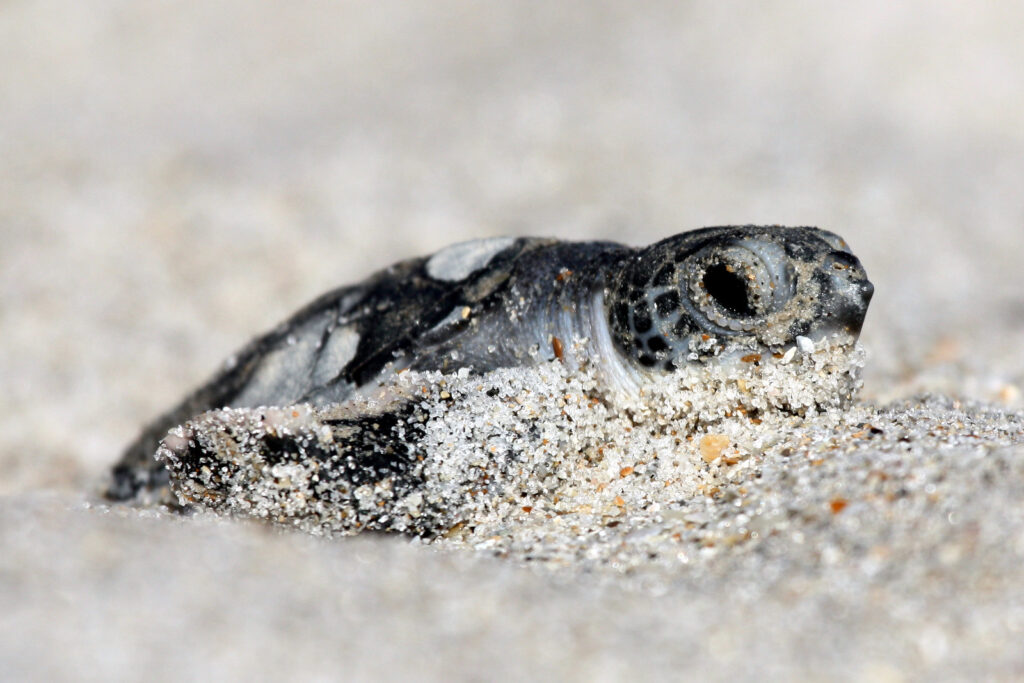
Green sea turtles were listed under the Endangered Species Act in 1978. Since that time, there have been conservation measures put in place in many locations. One such place is Florida, where restrictions on beachfront development and careful monitoring of turtle nests has helped to get hatchlings safely into the water. A gill net ban in 1995 sharply reduced the number of young turtles killed by fishing gear.
All of this has resulted in what is described as an explosion in turtle populations in Florida. Volunteers monitoring the 2023 nesting season on Florida’s beaches have counted more than 74,000 nests. That beats the previous record – set in 2017 – by an incredible 40%.
Unfortunately, this does not represent a guaranteed great future for the species. Sea turtles are particularly sensitive to the warming climate. The sex of a baby sea turtle is not determined by DNA, but rather by the temperature of the sand in which its egg develops. Cooler temperatures mean more males; warmer ones mean more females.
In recent years, the proportion of male green sea turtles has dwindled substantially. In the past few seasons, between 87 percent and 100 percent of the hatchlings tested in Florida have been female.
In the short term, the skewed sex ratio might be a boon for the species. Lots of females laying lots of eggs means lots of turtles. Sea turtles don’t reach sexual maturity until their twenties or thirties. So, for the next few decades, there are likely to be growing numbers of turtle nests. But down the line, there is going to be a real problem. Where will for all the female turtles find the mates to populate the species in the future?
**********
Web Links
Florida Turtle Nests Are Recovering. When They Hatch, Expect Mostly Girls.
Photo, posted October 5, 2011, courtesy of Keenan Adams / USFWS via Flickr.
Earth Wise is a production of WAMC Northeast Public Radio
Leave a Reply